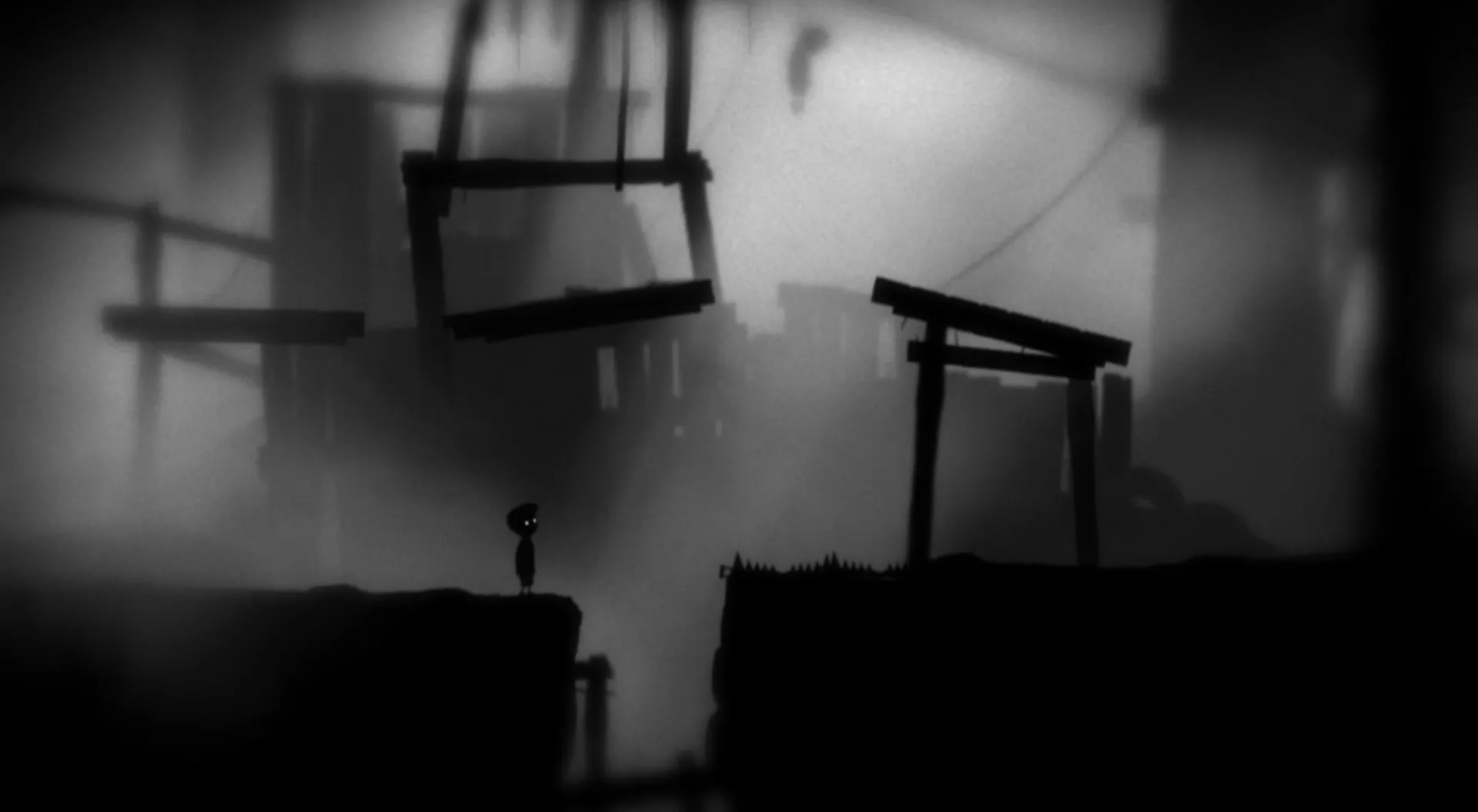And so another platformer manages to escape the gloomy limbo that is Xbox Live Arcade.
Quite why Limbo took a year to find its way I have no idea, maybe it couldn’t find the door shrouded in darkness… *does research* Rather more predictably, it turns out the awkward bouncer that is Microsoft decided to bar Limbo entry onto it’s niche platform, the personal computer. In spite of it showing quite the appetite for indie platformers. Another score for common sense.
But to call Limbo a platformer is a slight understatement. Sure, it’s 2D and you have to do a fair bit of jumping, but your protagonist is by no means a contender for the 2012 long-jump. Everything about the boy you control reminds you that he is still alive: His eyes shine brighter than anything in the black and white world around him, his run is imbued with a sense of innocence and helplessness – traits that are incredibly human, and seldom evoked in games. When the boy pulls a lever it seems to require every inch of his life, a life that I have squandered on far too many occasions.
Death is the subject at the heart of Limbo, and Limbo‘s handling of it is without a doubt the most divisive aspect of the game. But first let’s be clear, the contrast between life and death could have easily been a sickeningly pretentious artistic statement. To Limbo‘s credit it’s one it makes it with flare and impressive solidity.
As you run through its world, out-of-focus trees drift past in the background while every now and then you find your vision slightly obscured by something in the foreground. Because of this Limbosports a certain voyeuristic feel, and as a result you feel more like a puppeteer than in most games. Then suddenly the moody ambience of the forest is broken by the piercing sound of an unnoticed bear trap, your controller emits a subtle rumble as the boy is messily decapitated. Sorry little fella :(
You can tell Limbo hits the mark because no one needs to explain its art. When such life is conveyed by, and then horrifically stripped from your character, it has an impact.
Some may regard Limbo as unfair because death is unavoidable – often only by dying can you even begin deduce what is required in order to survive. It’s certainly a controversial game mechanic that could well infuriate. I did however realise on my second playthrough that death wasn’t forced upon me quite as often as I had thought. Limbo may be full of traps, but if you restrain your platform-gaming instinct to run rightwards and actually study your environment, a good deal of them can be carefully avoided. Or deliberately triggered if your feel like playing the role of sadistic puppet-master.
The game itself never explicitly reveals why your boy is intent on traversing his dangerous world; but as the soft-focus environment around you shifts from forest, to caves, to eventually the innards of some sort of giant machine, it’s hard to shake off a sense of progression. Similarly, over the first half of the game Limbo puts you up against a couple of recurring adversaries. Early run-ins with a giant arachnid probably make up the finest moments of the game until you finally put an end to its menacing pursuit.
Limbo’s second half sees it become intent on challenging the player mentally via the ever-popular medium of physics puzzles, these are for the most part well made and impressively varied. The latter being partly because late in the game Limbo chooses to introduce a couple of new mechanics – an unhinged notion of gravity? Wow, we haven’t seen that in a while! As Limbo nears it’s conclusion it mixes up its platform and puzzle elements in a bid to ultimately test the player. It succeeds, but at the expense of also testing the player’s patience as the extra difficulty further stresses the aforementioned die-and-prevail gameplay.
There is no doubt that Limbois a brilliant game, it is clever as it is artistic. There are realities captured in its 2D realm that have never made their way into games with far bigger budgets. The only shame is that in spite of its nifty puzzles, Limbo‘s second half doesn’t shine as bright as its first. It would have been better off ditching its borrowed late-game mechanics in favour of more of its own. More spiders.
